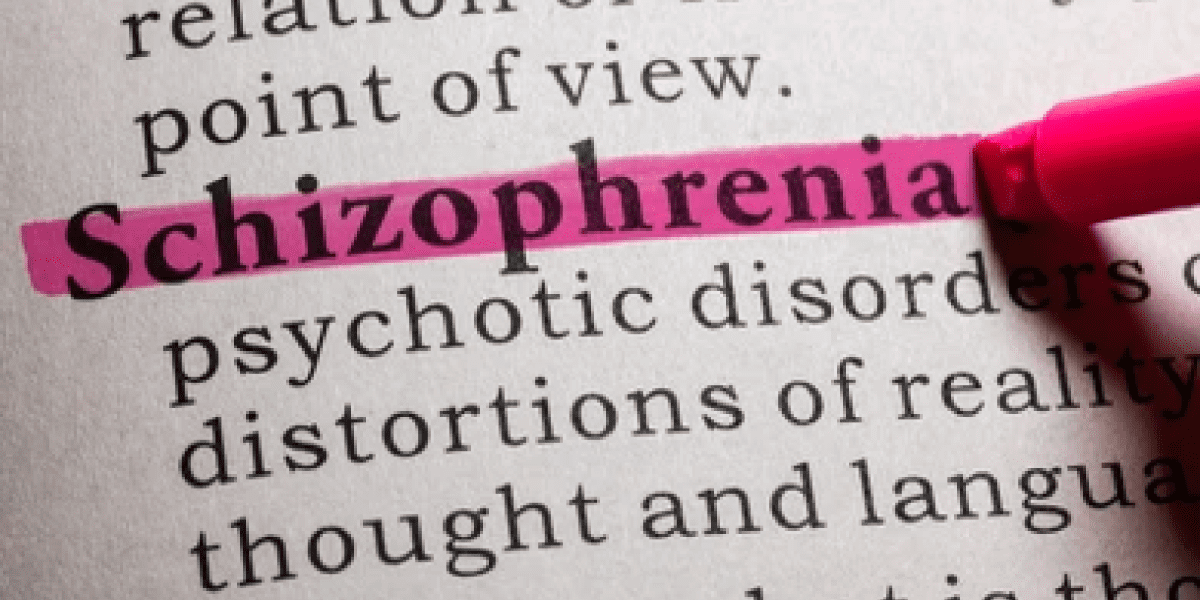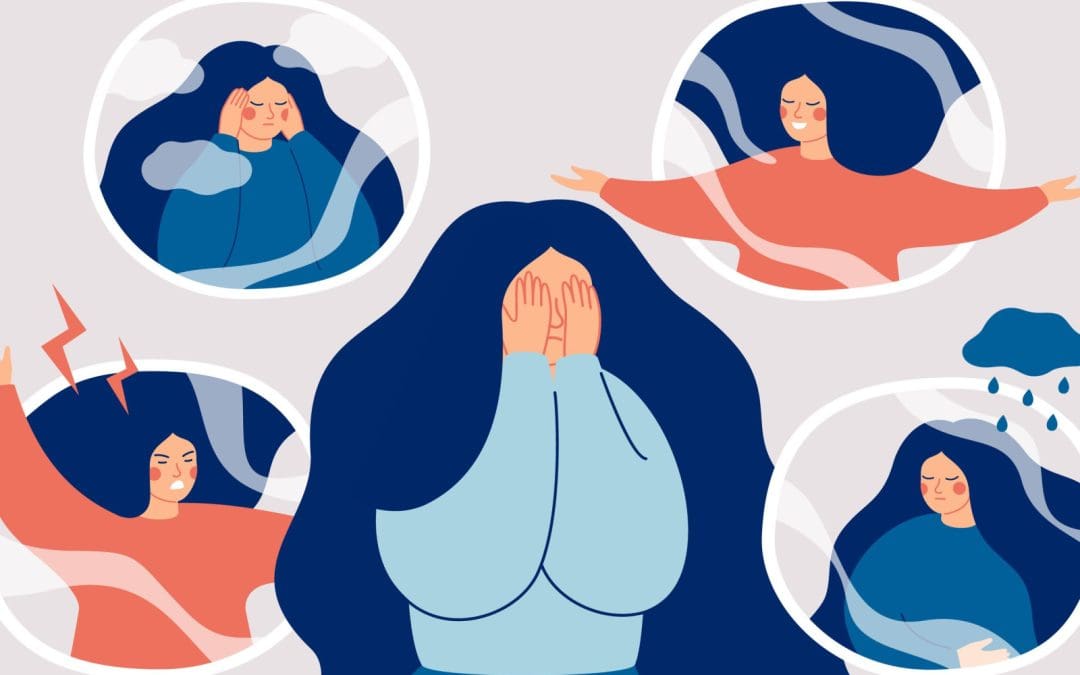Though they might sound similar, schizophrenia and schizoaffective disorder are two different mental health concerns. Both conditions can severely impact people who don’t have the right treatment. But how do you know the difference between schizophrenia vs. schizoaffective disorder, and how can you find help for one or the other?
Let’s break down schizophrenia vs. schizoaffective disorder to better understand the differences. This way, you will know exactly what treatment you need to start feeling like yourself again.
What Is Schizophrenia?

To truly understand the differences in schizophrenia vs. schizoaffective disorder, we must begin by defining what schizophrenia is. Many people have heard of schizophrenia but might not know just how prevalent this disorder is. According to the National Institute of Mental Health, schizophrenia is a mental health condition that impacts millions of adults in the United States.
While every person’s experience with the symptoms of schizophrenia differs, the most common signs include:
- Erratic thought patterns—On the outside, this might appear as incoherent speech or making connections between subjects that don’t make sense. This could also be atypical ways of thinking that are hard for others to follow.
- Hallucinations—These involve the five senses and can feel incredibly real to the person experiencing them, but the person knows (either in the moment or when they are in a stable place) that they do not actually exist.
- Delusions—Unlike hallucinations, delusions are beliefs that the person is convinced are real, even when evidence suggests otherwise. When it comes to delusions, logic goes out the window.
These symptoms of schizophrenia, amongst others, can be quite impactful and disruptive for people with this disorder. But it is possible to live a healthy, happy life with schizophrenia. It just takes having the right diagnosis, the right treatment, and the right support team to help you differentiate schizophrenia vs. schizoaffective disorder.
What Is Schizoaffective Disorder?
Similar to schizophrenia, people with schizoaffective disorder often require intensive treatment to manage the symptoms. However, in the schizophrenia vs. schizoaffective disorder conversation, schizoaffective disorder is much more challenging to diagnose. This is one of the biggest differences when looking at schizophrenia vs. schizoaffective disorder: Getting the right diagnosis for the latter condition isn’t the easiest task.
Part of why this is the case is because schizoaffective disorder is less prevalent than schizophrenia. On top of this, the symptoms of schizoaffective disorder overlap with the symptoms of schizophrenia. So, if you’re experiencing symptoms of one of these conditions, how do you tell between schizophrenia vs. schizoaffective disorder?
There is one key distinction: In addition to symptoms of schizophrenia, people who have schizoaffective disorder also show signs of a mood disorder. There are actually two different different types of schizoaffective disorder:
- Bipolar type—With this type of schizoaffective disorder, patients have symptoms related to bipolar disorder, which is a mood disorder characterized by extreme highs and lows. These are also known as manic and depressive episodes.
- Depressive type—Unlike the bipolar type of schizoaffective disorder, people who experience the depressive type only have the “lows.” This could impact things like self-care, motivation, and the ability to complete daily tasks.
Since the symptoms for schizoaffective disorder mirror both those of schizophrenia and a mood disorder, it can be even more challenging to get the correct diagnosis. Unfortunately, this means that some people with schizoaffective disorder aren’t able to receive the treatment that they need until this condition has already greatly impacted their ability to function.
How Do Doctors Diagnose Schizophrenia vs. Schizoaffective Disorder?
To best help to differentiate schizophrenia vs. schizoaffective disorder, mental health professionals will use the diagnostic criteria for each condition and assess the patient who is having the symptoms. Taking note of these symptoms as well as the person’s ability to function is what usually leads to a diagnosis of either schizophrenia or schizoaffective disorder.

This is why it’s important for people with mental health conditions to disclose all of their symptoms, including how they feel, any unusual thoughts they might be having, and if their behavior and mood has changed recently. Additionally, other common co-occurring conditions, like a substance use disorder, can exacerbate the symptoms that someone might be having. Being open and honest about the struggles you are having is an essential step toward getting the right type of treatment.
All this said, getting a diagnosis of schizophrenia or schizoaffective disorder can be overwhelming. But having an explanation behind the symptoms is the first step toward treating these disorders. Mental health treatment should always be specialized depending on the condition a person has, family history, any co-occurring disorders, and their recovery goals. This means that the treatment for schizophrenia is different from the treatment for schizoaffective disorder, despite the fact that they share a lot of similar attributes.
What Is the Treatment for Schizophrenia vs. Schizoaffective Disorder?
There are various treatment approaches to schizophrenia and schizoaffective disorder. Again, each case is unique and treatment plans should be individualized based on what a particular person needs. Commonly, the treatments that work best for both schizophrenia and schizoaffective disorder are ones that combine multiple approaches. This might first come in the form of assessments.
When you are looking for treatment, the initial assessment is where having a clear diagnosis of schizophrenia vs. schizoaffective disorder can be most helpful. In this assessment with mental health professionals, they might also do additional psychiatric assessments, crisis evaluations, and cognitive screenings. All of these help the experts to get more information in order to know how to best treat you.
From there, some examples of effective therapies for these mental health conditions would be:
- Medication management
- Group therapy
- Family counseling
- Neuro-psychology testing and treatment
- Recreational therapy
- Wellness education
- Dual diagnosis treatment
Most importantly, having access to a safe, supportive environment in which you can work through these struggles can make all the difference when it comes to long-term recovery. Therefore, the best path toward treatment is to find a facility that offers adult psychiatric services.
These treatment centers will focus on mental health recovery from the very first assessment to providing discharge resources. When you leave the treatment center, you should feel more prepared to take on the challenging symptoms of schizophrenia and schizoaffective disorder.
Where Can You Get Mental Health Help?
The Willough at Naples is a mental health facility that provides treatment for schizophrenia, schizoaffective disorder, and other mental health concerns. Here, we know how easy it is to lose yourself in the chaos of untreated mental health symptoms. We aim to provide a tranquil space where you can focus solely on your recovery.
If you’re not sure where to start when it comes to treatment for your mental health, give us a call at (239) 688-3063 or submit a confidential contact form with your questions. We’re here to listen, assess, and work together toward a healthier and happier future.

